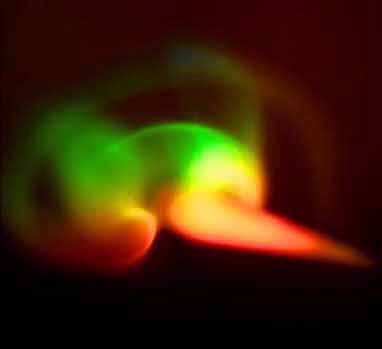
(0) Flowers are to the background green
of meadow and forest what the well-made
poem is to the constant chatter of sounds
which surrounds us. How strikingly
beautiful they are, these centers
where essences converge.
On Art, the Artist and Nature in Flowing Movement

|
(0) Flowers are to the background green of meadow and forest what the well-made poem is to the constant chatter of sounds which surrounds us. How strikingly beautiful they are, these centers where essences converge. |
(1) The most creative of all acts is that of bringing people together in new,
unknown ways. It is also the most arduous. What could be more urgent
or necessary than this?
(2) The only thing we can know for sure about creativity is perhaps what
it is not, or what blocks it. Fear, greed, jealously -- as easy to spot as weeds
in the summer garden. But the source of the seed? One looks up to the heavens
and is brought down to earth, clear blue skies in all directions.
(3) The essence of Art is not self-expression; nor is it to be found
in any system of aesthetic norms, tenets or beliefs. Rather, it shows itself
in the willingness to purify our perception. By giving attention to disorder
or corruption in ourselves, that which is harmonious, good and beautiful
simply reveals itself, of itself, and, with some luck and much work, perhaps
can then be given manifest form.
(4) Art is balance in flowing movement demonstrated. At the same time,
Art is about balance in the metaphysical sense— balance within ourselves,
between ourselves, and in our relationships with the world around us.
You may begin a poem with a scream, but the scream itself instantly
moves to find its proper counterpoint in the gentleness of a whisper.
(5) In Art, the primary criteria of what is good, right and beautiful are
not to be found in philosophy or aesthetics, but rather in a life devoted
to the observation of Nature. Once the architect or graphic designer can no
longer draw a perfect leaf, flower or circle, his or her work will eventually
come to refer only to itself, or, at best, merely to other art. Such work denies
itself the guiding, nurturing and sustaining resonance with the symphony
of natural forms which surrounds us.
(6) In both natural space and time, the most difficult of all tasks
is to find and know the living centers.
(7) The silent joy of the devoted labor of making things instantly vanishes
if unforced, unselfconscious anonymity is lost. The deer in the meadow
are always uneasy about someone surreptitiously looking on
from a distance.
(8) The degree of precision required in any particular situation should
not be dictated merely by an external standard, but rather informed
by the inner movement of meaning within the widest context being
considered. Irrelevant precision results in the imprecision
of something relevant.
(9) In the Arts, criticism -- as opposed to dialogue -- is to creativity
what chainsaws and bulldozers are to the living forest. What was once
impenetrable mystery gives way to the clear cuts and muddy straight tracks
left behind by the short-sighted sharpness of fragmentary analysis
and aesthetic programs with an axe to grind.
(10) Sometimes, the best and most appropriate form of criticism
or commentary is simply to create a better alternative yourself and
then demonstrate its worth by helping it take root and flower among
the young people of the world.
(11) We shape the world and the world shapes us.
The more spiritual and in harmony with the natural world a culture
becomes, the fewer and fewer words will be needed to say
ever-more important things.
(12) You know you're doing good work when even the waste paper
looks too beautiful to throw away.

(Photo: Prism, Smoke— Winter Sunlight
)
| go to Picture/Poems:
Central Display
| go the the
Picture/Poems:
Archive of Miniatures | go to PicturePage:
Week IV |
|
Map
|
TOC:
I-IV |
TOC:
V-VIII |
Index |
Text Only
| Download
Page |
Newsletter
|
About
P/P |
About Cliff
Crego |
Copyright © 2002 Cliff Crego Comments to
crego@picture-poems.com
(created
XI.26.1999)
(Last update:
III.6.2002)